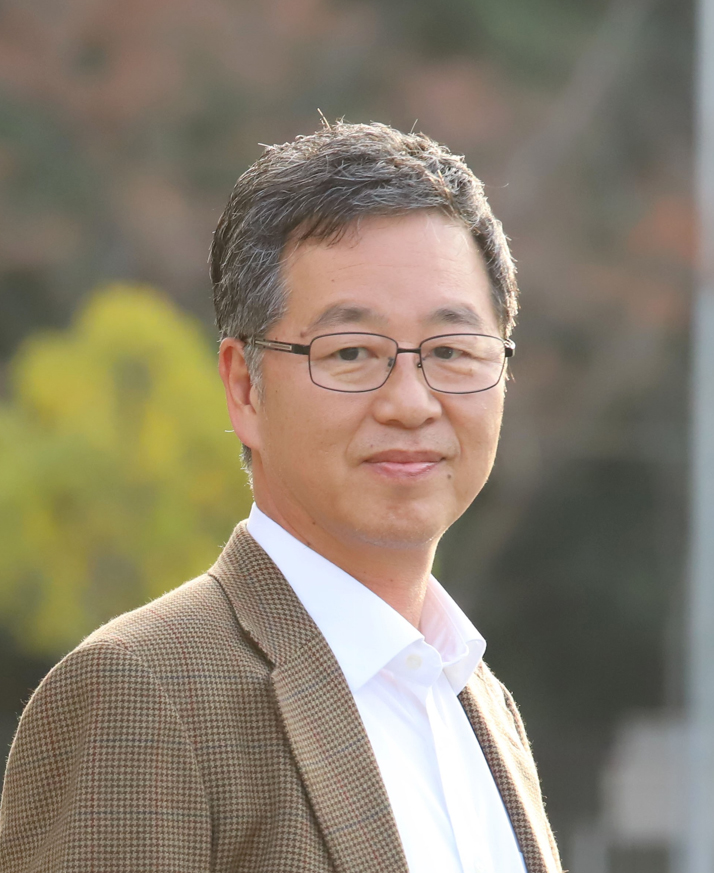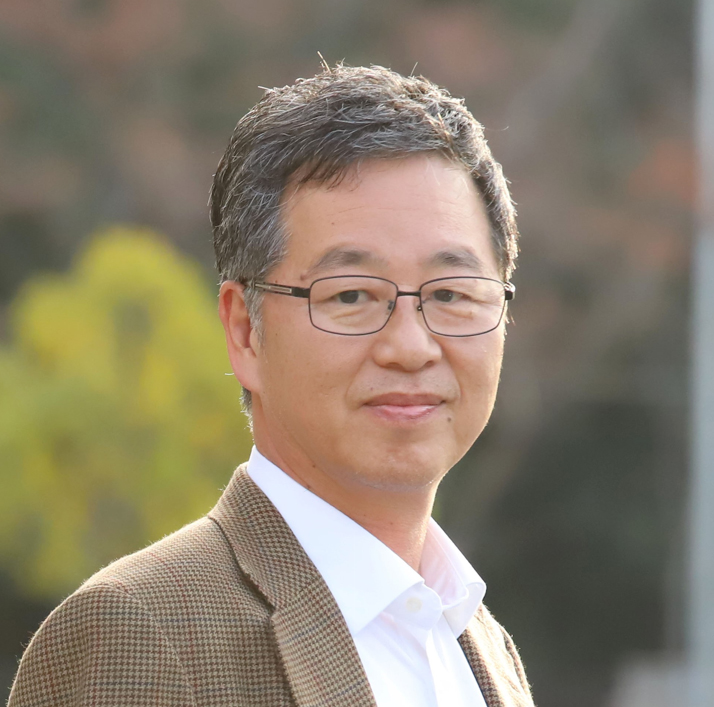Message from the Director-General
What is Genetics?

Starting from December 1, 2024, I will be serving as the Director of the National Institute of Genetics (NIG). During my introductory rounds, I am often asked by non-biologists, “What kind of academic discipline is Genetics?” Particularly, government officials ask me, “What’s the difference between NIG and the National Institute of Basic Biology in Okazaki?” Hmm… how should I answer? It’s quite a challenging question.
Typically, the name of an academic field should represent its object of study. If so, genetics would mean studying “genetic phenomena,” and most people would likely interpret this as researching the principles behind genetic processes unique to living organisms. However, this definition is quite broad, or perhaps too broad. The fundamental genetic phenomenon should be the change in gene combinations through meiosis and fertilization. But in the process of manifesting these traits, virtually every molecular mechanism intervenes, ultimately encompassing almost all life phenomena. This would make genetics equivalent to biology (life sciences), and indeed, looking at the current members of NIG, it’s clear that this understanding is common. However, as the director of NIG, this is problematic. To assert the institute’s existence to the world, we need an appropriate keyword. I must do something about this…
So, somewhat desperately, I turned my thoughts to Mendel, the founder(?) of genetics. Mendel was a pioneer who transformed biological research—which had previously been merely natural history—into a “science that infers invisible principles through experiments. ” His achievements are, at least in my value, the greatest in the history of life sciences. I recommend that everyone read his research paper “Versuche über Pflanzen-Hybriden” (Experiments on Plant Hybrids), which is easily available in Japanese translation.
Reading Mendel’s biography and papers, one can clearly see that he was an outsider in the field of biology. After studying at an Austrian university for two years (1841-1843), he continued his studies while serving as a priest in a monastery in Brno (monasteries were then also places of education and research). Occasionally, he even took to the lectern to teach Greek and mathematics. He also had the experience of studying at the University of Vienna, where he learned physics and mathematics from Doppler, famous for the Doppler effect. In short, he was not a biological expert. Perhaps one of the factors in Mendel’s research success was that he was an “amateur” in biology. For biologists of the time who were constantly exposed to the complexity and delicacy of living organisms, it would have been inconceivable that the mechanism of inheritance could be so simple (as represented by the three laws of inheritance) and could be demonstrated by simple experiments. Mendel introduced the physical approach of explaining phenomena from the behavior of ideal objects. His hypothetical assumptions were also very simple and easy to understand.
Suppose there are factors determining some genetic traits in the body (cells). At that time, there was already debate among some researchers about whether these were like a liquid that could mix and divide (mixture theory), or whether they had particle-like properties that were indivisible and non-fusible (particle theory). Mendel conducted a thought experiment about this. For children born to parents with different characteristics, what happens to the genetic material? If we adopt the mixture theory, the genetic material would mix, becoming a genetic factor with intermediate properties. In this case, the child’s traits would always have to be in the middle of the parents’. However, in reality, this often does not happen. Many traits tend to become like one of the parents’ (dominant/recessive), and sometimes a trait that disappeared in the first hybrid generation reappears in the second generation (atavism). This cannot be explained by the mixture theory. On the other hand, by adopting the particle theory and assuming that children inherit one genetic factor (gene) from each parent (law of segregation), everything can be explained without contradiction. This idea itself is not particularly difficult, and probably other researchers besides Mendel had similar thoughts. However, proving it required terribly time-consuming experiments. The reason nobody else did it was probably that the “common sense” that “life is exquisite beyond human knowledge” got in the way. Only Mendel, who overcame this, believed in his hypothesis, and (probably) continued experiments with inexhaustible grit, could eventually reach the answer. It’s truly praiseworthy. Isn’t this the ideal image of a researcher?
So, what I’m trying to say is that I want research at NIG to be research that “explores the mysteries hidden in nature with Mendel’s guts, believing in one’s hypothesis. ” You might think, “What on earth does that mean? ” But this is quite important. With the internet, academic information is now instantly available, but the number of papers is enormous, and it’s totally impossible to read all related papers. Therefore, information is now filtered by impact factor (IF), which tends to become “important things = what everyone commonly feels,” and easily flows with majority values. However, breakthroughs in research only come from values and hypotheses original to the individual, distanced from average thinking. Thus, to launch original research, one must always challenge themes that deviate from the field’s conventional wisdom, and for this, Mendel-like courage and conviction are necessary.
Therefore, though it might sound a bit contrived, when asked “What is research at National Institute of Genetics?” I’d like to answer as above. Please bear with me. m(__)m
This greeting will be updated regularly (about once every three months), so please feel free to visit again if you’d like.
KONDO, Shigeru
Director-General, National Institute of Genetics

Director-General, National Institute of Genetics
What is Genetics?
Starting from December 1, 2024, I will be serving as the Director of the National Institute of Genetics (NIG). During my introductory rounds, I am often asked by non-biologists, “What kind of academic discipline is Genetics?” Particularly, government officials ask me, “What’s the difference between NIG and the National Institute of Basic Biology in Okazaki?” Hmm… how should I answer? It’s quite a challenging question.
Typically, the name of an academic field should represent its object of study. If so, genetics would mean studying “genetic phenomena,” and most people would likely interpret this as researching the principles behind genetic processes unique to living organisms. However, this definition is quite broad, or perhaps too broad. The fundamental genetic phenomenon should be the change in gene combinations through meiosis and fertilization. But in the process of manifesting these traits, virtually every molecular mechanism intervenes, ultimately encompassing almost all life phenomena. This would make genetics equivalent to biology (life sciences), and indeed, looking at the current members of NIG, it’s clear that this understanding is common. However, as the director of NIG, this is problematic. To assert the institute’s existence to the world, we need an appropriate keyword. I must do something about this…
So, somewhat desperately, I turned my thoughts to Mendel, the founder(?) of genetics. Mendel was a pioneer who transformed biological research—which had previously been merely natural history—into a “science that infers invisible principles through experiments. ” His achievements are, at least in my value, the greatest in the history of life sciences. I recommend that everyone read his research paper “Versuche über Pflanzen-Hybriden” (Experiments on Plant Hybrids), which is easily available in Japanese translation.
Reading Mendel’s biography and papers, one can clearly see that he was an outsider in the field of biology. After studying at an Austrian university for two years (1841-1843), he continued his studies while serving as a priest in a monastery in Brno (monasteries were then also places of education and research). Occasionally, he even took to the lectern to teach Greek and mathematics. He also had the experience of studying at the University of Vienna, where he learned physics and mathematics from Doppler, famous for the Doppler effect. In short, he was not a biological expert. Perhaps one of the factors in Mendel’s research success was that he was an “amateur” in biology. For biologists of the time who were constantly exposed to the complexity and delicacy of living organisms, it would have been inconceivable that the mechanism of inheritance could be so simple (as represented by the three laws of inheritance) and could be demonstrated by simple experiments. Mendel introduced the physical approach of explaining phenomena from the behavior of ideal objects. His hypothetical assumptions were also very simple and easy to understand.
Suppose there are factors determining some genetic traits in the body (cells). At that time, there was already debate among some researchers about whether these were like a liquid that could mix and divide (mixture theory), or whether they had particle-like properties that were indivisible and non-fusible (particle theory). Mendel conducted a thought experiment about this. For children born to parents with different characteristics, what happens to the genetic material? If we adopt the mixture theory, the genetic material would mix, becoming a genetic factor with intermediate properties. In this case, the child’s traits would always have to be in the middle of the parents’. However, in reality, this often does not happen. Many traits tend to become like one of the parents’ (dominant/recessive), and sometimes a trait that disappeared in the first hybrid generation reappears in the second generation (atavism). This cannot be explained by the mixture theory. On the other hand, by adopting the particle theory and assuming that children inherit one genetic factor (gene) from each parent (law of segregation), everything can be explained without contradiction. This idea itself is not particularly difficult, and probably other researchers besides Mendel had similar thoughts. However, proving it required terribly time-consuming experiments. The reason nobody else did it was probably that the “common sense” that “life is exquisite beyond human knowledge” got in the way. Only Mendel, who overcame this, believed in his hypothesis, and (probably) continued experiments with inexhaustible grit, could eventually reach the answer. It’s truly praiseworthy. Isn’t this the ideal image of a researcher?
So, what I’m trying to say is that I want research at NIG to be research that “explores the mysteries hidden in nature with Mendel’s guts, believing in one’s hypothesis. ” You might think, “What on earth does that mean? ” But this is quite important. With the internet, academic information is now instantly available, but the number of papers is enormous, and it’s totally impossible to read all related papers. Therefore, information is now filtered by impact factor (IF), which tends to become “important things = what everyone commonly feels,” and easily flows with majority values. However, breakthroughs in research only come from values and hypotheses original to the individual, distanced from average thinking. Thus, to launch original research, one must always challenge themes that deviate from the field’s conventional wisdom, and for this, Mendel-like courage and conviction are necessary.
Therefore, though it might sound a bit contrived, when asked “What is research at National Institute of Genetics?” I’d like to answer as above. Please bear with me. m(__)m
This greeting will be updated regularly (about once every three months), so please feel free to visit again if you’d like.
KONDO, Shigeru
Director-General, National Institute of Genetics















